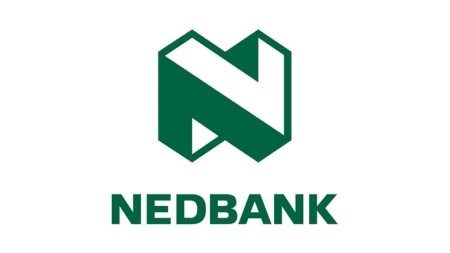Everyone loves chocolate. Or at least they should. Personally I view anyone who doesn’t appreciate chocolate with suspicion as I believe there must be something wrong with them.
Unfortunately it is my lot in life that I am lactose intolerant so my affair with chocolate and indeed anything dairy related is fairly restricted. Throwing caution to the wind I decided to attend a ‘Chocolate Appreciation’ class at the Lindt Chocolate Studio at the Design Quarter in Johannesburg with a friend recently.
Put it this way, the after-affects were worth it. Upon our arrival, my friend and I were enveloped by the smell of chocolate and welcomed with a thick chocolate drink. Sucking the heavenly mixture through a straw, we explored the studio. The complete range of Lindt chocolate was on sale in the reception area along with handmade chocolates, Lindt chocolate recipe books and utensils.
The actual studio, which was brightly lit, spotless and featured a few chocolate sculptures as well as a wall sized picture of the Matterhorn, lay beyond the reception area. We took up our positions here alongside a table laid with mats on which different types of chocolate and crushed cocoa beans had been arranged.
Our host for the evening started off with a brief history about how Lindt chocolate came about. Lindt’s origins reach back to 1845 when confectioner David Sprüngli-Schwarz and his son Rudolf Sprüngli decided to make solid chocolate bars after the Italian fashion in a small pastry shop in Zurich. Up until that point, chocolate was consumed primarily as a drink.
David Sprüngli added extra cocoa butter to their chocolate which made it stand out and paved the way for the rapid expansion of the company. By 1870, Sprüngli was exporting its chocolates as far afield as India. In 1899, Sprüngli acquired the rights to Rodolphe Lindt’s brand and exclusive manufacturing secrets which involved ‘conching’- a method Lindt had developed in 1879.
Through conching, Lindt ground down chocolate to produce a fine melting chocolate which took the world by storm. Interestingly, Lindt’s method came about entirely by chance. He left his conching machine on by accident while he went away on a trip one weekend and returned to find a liquid form of chocolate which would prove to be far ahead of its time in terms of aroma and melting qualities. Post-merger the company was named ‘Chocoladefabriken Lindt & Sprüngli AG’ which has evolved and gone from strength to strength ever since.
Lindt’s history explained, we were informed that the studio was just that, a studio and not a factory. The studio is allowed “to make chocolate from chocolate but not chocolate from beans”. So where does Lindt get their beans from and how do they make their chocolate? According to our host, all cocoa plants grow between 10 and 20 degrees north or south of the equator. There are three main types of cocoa bean plants: Criollo, Forastero and Trinitero. Criollo plants apparently produce the best flavour beans and are highly sought after. Lindt utilises a combination of Criollo and Forastero beans.
By all accounts cocoa plants are quite sensitive. It takes six years for these plants to mature and if they feel threatened, they hibernate for up to ten years. The fruit also has to be cut in a specific way and handled carefully lest it spoil. Once harvested, the beans are then processed at Lindt’s factories.
One of the by-products of cocoa beans is cocoa butter which Lindt uses liberally. Indeed, Lindt chocolate contains between 32 and 39% cocoa butter which is a requirement of ‘couverture’ or high quality chocolate. According to our host, cocoa butter is expensive (it costs between R300 and R400 per kilo) which is why other chocolate manufacturers sometimes compensate with ingredients such as palm oil or vegetable fat. Lindt also only uses Swiss cow milk in their chocolate.
The really fun part of the class then began. We were encouraged to use our senses to assess the chocolate. First, we looked at the chocolate to check that there were no white streaks and that it was even in colour. We were told the chocolate should be fragrant and smooth, not sticky and that it should snap when broken. Finally we were allowed to taste it!
A piece of Lindt’s Extra Creamy tablet (not bar you’ll note) was first on the menu. The extra creaminess is achieved through toasting this chocolate’s milk powder and through using barley milk extract. Next came Lindt’s Sea Salt flavour which, although liked by others in the class, was not my favourite. Orange Intense (a best seller in South Africa) and Mint Intense were next. You won’t find any crunchy orange or mint pieces in this chocolate-only the finest orange peel oil and mint essence are used to flavour these chocolates.
Lindt’s 70% dark chocolate and caramel chocolate was next. Although dark chocolate is healthier, I think it’s safe to say I prefer Lindt’s less intense, milkier flavours. The 70% dark is strong and quite bitter and is definitely an acquired taste. The caramel proved popular with everyone in attendance. Lindt’s caramel is prepared according to European standards which means it is taken to smoking point and then ‘shocked’.
Post tasting we were given the opportunity to make our own chocolate ‘lollies’. The lollies comprised Lindor balls on sticks which we dipped in various tempered chocolates and coatings such as nuts.
Our class at an end, we were given bags to take our chocolate leftovers and lollies home. At this juncture we were told that we should keep an eye out for new flavours due to come to South Africa soon including wasabi, vanilla and strawberry. I thoroughly enjoyed the evening and highly recommend one of the studio classes to anyone looking to do something different or just take their appreciation of chocolate to the next level.
For further information on the various classes available at the studio which range from the basic to in-depth workshops, go to www.chocolatestudio.co.za



